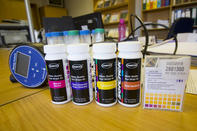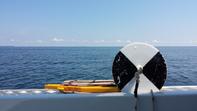
How to Sample Water in a Dam
The best time for taking water samples in the Western Cape would be November to January, says Henk Stander principal technical manager of Aquaculture: Department of Animal Sciences at Stellenbosch University. Sample water near the surface (from 1 to 2 m deep) and from near the bottom of the dam by means of a water sampler.
In shallow dams, take a sample at the inlet to the dam and another sample at the outlet. Take one or two samples or more if the budget allows; doing a full laboratory analysis will cost between R1 500 and R2 000 (2019). A sample volume of 350 ml will be sufficient. Store in a fridge and analyse within three days of taking the sample, advises Stander.
Ideal Water Quality Levels for Aquaculture?

Water samples are analysed for various properties and could also include testing for heavy metals. The initial water quality (before starting freshwater fish farming) should be as follows: Oxygen: Sufficient oxygen in the surface water: 7 to 12 mg/L.
Too high levels of oxygen would demonstrate excessive phytoplankton growth and increase the risks of oxygen depletion when phytoplankton dies off. pH: Surface water pH should be lower than 8 and between 5 and 8.
The difference between the surface and bottom water pH should be less than 1.5. Ammonia: The ammonia levels at the bottom should not exceed 1 mg/L. TP: The total phosphorus levels (TP) of the surface water should not exceed 50 μg/L (0.05 mg/L).
TN:TP The ratio of total nitrogen: total phosphorus (TN:TP) should exceed 20. This is to avoid off flavours in the fish due to algae taint. Visibility Good visibility should be more than 50 cm as obtained with Secchi-disc reading.
By Marinda Louw